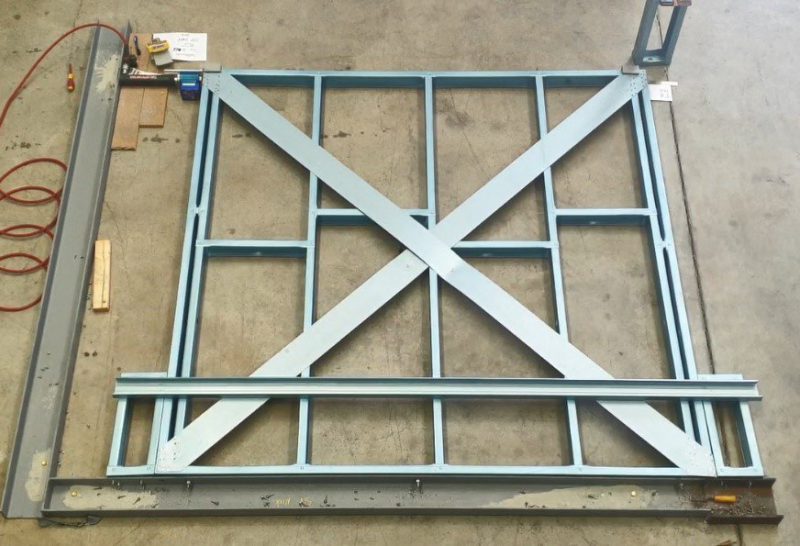Review of Strapping Vs. K bracing with AFS
05-08-2020

Last year, Australian Framing Solutions (AFS) approached Scottsdale with a requirement to understand the most efficient way of improving the lateral bracing options. Thanuja worked with the AFS team to i) develop a plan ii) model and analysis iii) testing scenarios iv) report of the results and findings which we are making available to the Scottsdale network of fabricators. The outcome of the analysis and testing was that 150mm strap bracing is providing 15kN capacity compare to the K-bracing proving 1 kN or other traditional bracings. It is also significantly cheaper because you can use off cuts of the mother coil. Bracing is a very important element in a light gauge cold-formed steel building design. Builders regularly use a combination of K-bracings, strap bracings and bracing boards. The first question is, can we get the cumulated capacity from all of them? Due to the different ductility levels of different bracings, they do not work together. So, while one bracing is giving its full capacity, the second bracing doesn’t act properly. Unfortunately, some builders are using all the different bracing types together when the bracing requirements is higher. What we can do when the bracing requirement is higher, but you do not have enough walls to install them? Most of the builders use K-bracing since it can be installed in a narrow wall area like 450 mm. Do we actually get the required capacity from them? Or, can we get reasonable capacity when compare to the labour and material cost? The answer is no. The ductility of K-bracing is very high. It can deflect considerably with 1 kN load. So, K-bracing capacity is almost nothing compare to the cost and strap bracing capacity. Therefore, K-bracing is not a recommended solution. The analysis and review process to determine the best possible bracing options Using data from other regions, particularly in the USA, indicated there more efficient methods of improving the structure by restraining the lateral loads other than using K bracing. The first step was to prepare documentation for a series of tests to determine the most efficient type of bracing for K Brace, 30mm strap brace, 150mm strap brace and plywood. For these tests, we used both Thanuja as our house engineer and 3rd party engineers, Eiger Engineering. Scottsdale selected to use 150 mm straps as cross bracing since it is available as off cuts from the mother coil. Initially we discussed this with different consulting engineers and, their opinion was not positive. So, we conducted some tests to prove that 150 mm strap bracing can carry a significant amount of load. We fabricated 2.4 m by 2.4 m walls with C90_37_0.75 wall studs. Our results showed that 150 mm strap bracing can carry 15 kN horizontal load. The strap or the connection didn’t fail. It is the failure of wall members. So, if the wall is 0.95 mm thick material, the capacity can be higher. Outcomes |
